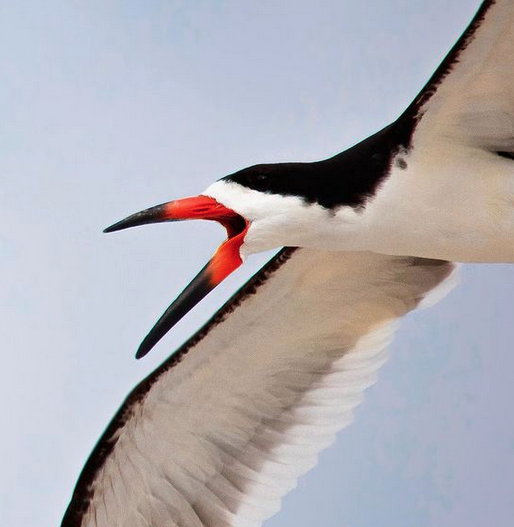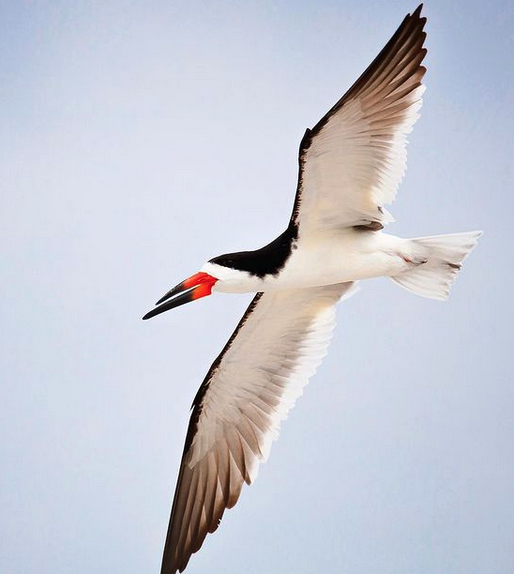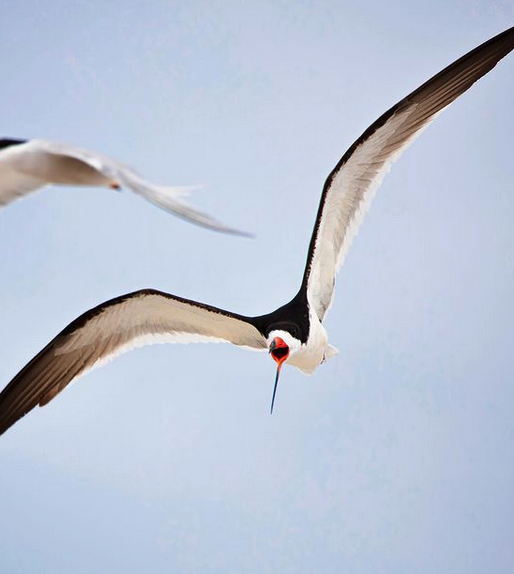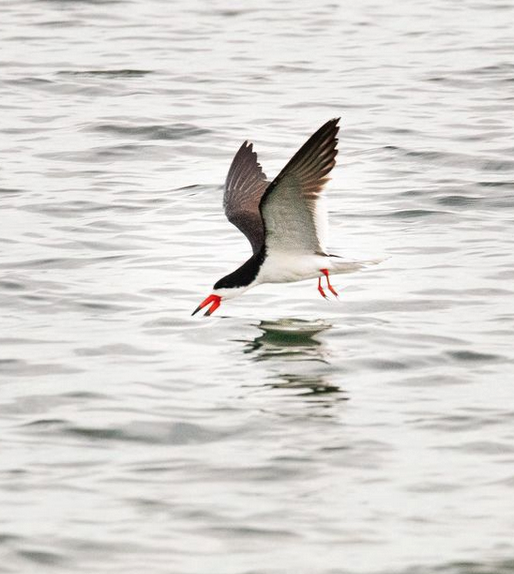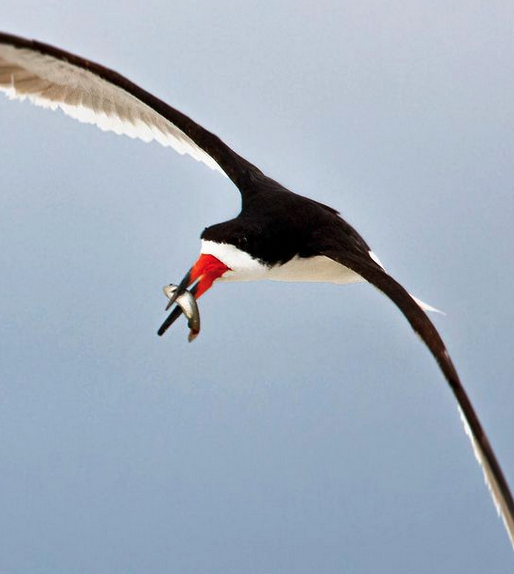By: Sally Siko
The nesting colony of Black Skimmers has returned to Wrightsville Beach NC!
While on a recent trip to the southeastern part of the state I was pleased to see this huge flock sitting in the low (nearly flat) dunes in their usual spot.
Though they aren’t actively nesting yet, soon the mothers will lay their eggs (1-5) in a shallow depression in the sand.
From there the mother will lay low in the sand, flattened out like a bird pancake to incubate her eggs.
25 days later, the chicks will hatch and the real work will begin as both parents will be tasked with feeding their hungry brood.

Black Skimmers are a familiar sight along the entirety of the North Carolina coastline.
Sometimes called the ‘toucan of the sea, their large red and orange bills make them easy to ID even from a distance.
In fact, their uniquely shaped bill is directly tied to their namesake hunting method.
Gliding low over the water, allowing its lower mandible to slice the water’s surface, when a Skimmers bill strikes a fish, it snaps shut like a mousetrap.
The skimmer then aligns their prey headfirst before swallowing it whole.
They dine primarily on small fish such as minnows, killifish and herring. Shrimp, small crabs and other crustaceans make up the remainder of their diets.
It’s really interesting to watch them hunt and if you ever have the opportunity to watch them do so, it’s worth sticking around for.


These beautiful birds are year round residents of North Carolina but are more widely distributed along the entire coastline throughout the spring and summer months. Thought you can find them gliding low over the ocean and the beach, your most likely to spot Skimmers searching for a snack over calm tidal waters, of estuaries, saltwater marshes and sounds.
Aren’t they lovely?
I can’t wait to come back to this spot in a few weeks to check on the colony’s nesting progress!
Photos by @sally_siko of @bestlife_birding on my beloved full frame 50MP beast, the mighty @canonusa #5Ds






